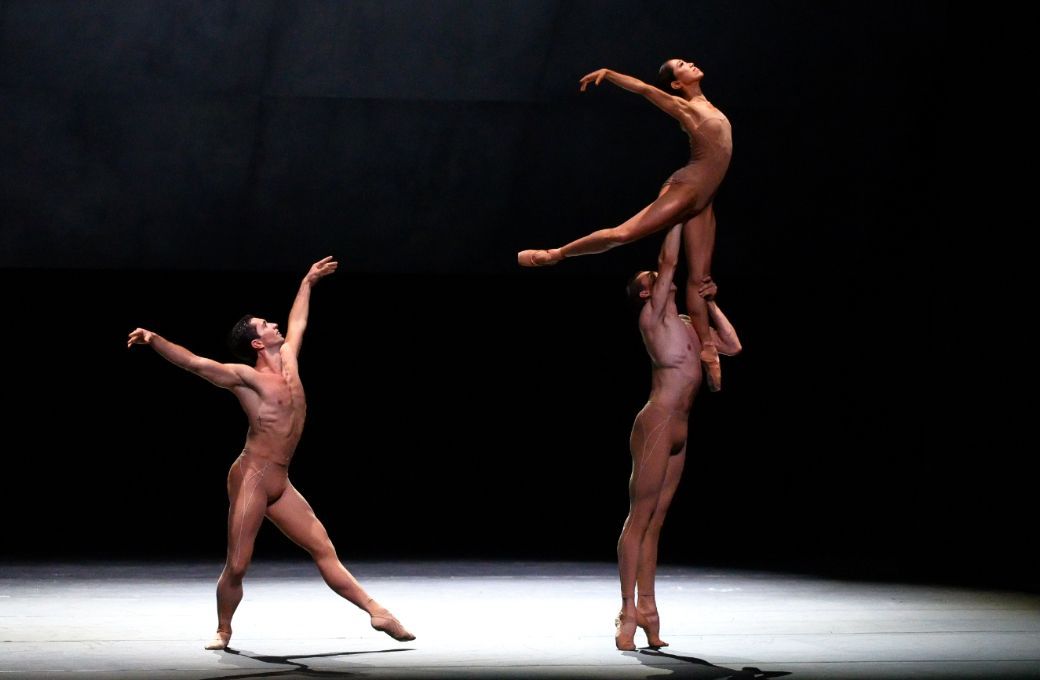English National Ballet’s (ENB) first season under its new artistic director, Aaron S Watkin, is finally underway. Appointed in 2022, but not able to immediately take up his new position until August 2023, Watkin was much in evidence at Sadler’s Wells during ENB’s packed opening night of Our Voices, a triple bill of works by George Balanchine, Andrea Miller and David Dawson. Watkin was there, meeting, greeting and charming people in the foyer and auditorium, and it was hard not to think that a welcome new administration under his leadership had finally taken charge of the company. The dancers, too, were dancing with a new sense of spontaneity and expression, as if they had been liberated from a heavy burden.

This feeling of polish, of sleek precision and emotional sincerity, was seen to great effect in the closing work of the evening, Four Last Songs, a new ballet choreographed by UK-born David Dawson and set to the ravishing music of Richard Strauss, gloriously sung by soprano Madeleine Pierard. Beneath moving images of black and white clouds, the dancers burst onto the stage at speed, their arms thrust outwards and upwards as they ran in circles, bent their bodies, or swooped into arabesques that spread out into space. In choreography aligned to the music, Dawson creates a sense of constant movement for the ensemble, who appear almost naked in their “nude” bodytights. Like celestial beings, they could be dancing beneath the clouds of the heavens, the men lifting the women onto their shoulders, who then extend their arms and legs as if they were flying. Despite eye-pleasing groupings and poses for the dancers, however, I would have liked to have seen a little more variety in the movement vocabulary – there was too much of a similarity of choreographic style for each of the songs – and perhaps a little more stillness, but Dawson succeeds totally in making ENB look marvellous.
Four Last Songs was commissioned for ENB by Watkin, but Andrea Miller’s Les Noces, Ascent to Days, had been programmed by his predecessor. Marking the centenary of the first performance by Serge Diaghilev’s Ballets Russes of Igor Stravinsky and Bronislava Nijinska’s Les Noces, a masterpiece of 20th century ballet, Miller had been asked to create a new version of this monumental work. It must be a daunting, almost impossible task to seek to better the stark, percussive, yet thrilling original, and, although Miller’s production is highly theatrical, the new storyline – concerning a community at odds with itself – is confusing. Who are these people and what exactly are they doing? There is much rushing about, much enveloping people with long lengths of heavy cloth, much anguished posturing and despairing gestures, but it wasn’t until later, when I had a chance to read the programme note, that I discovered it was meant to depict the aftermath of The Rite of Spring, and had nothing at all to do with an arranged Russian peasant wedding (although the chorus, singing in English translation, still related the story of a couple getting married).
ENB’s dancers were tireless in their performances, especially Breanna Foad, Alice Bellini, Francesca Velicu, James Streeter, Rentaro Nakaaki and Henry Dowden, but I felt this was such a missed opportunity. It would have been kinder to allow Miller more of a free hand in what she created on the company, instead of offering her a poisoned chalice like Les Noces. The striking setting, consisting of what looks like the steps of a ruined Ancient Greek theatre, and an elevated cage of twigs and branches above the stage, was designed by the artist Phyllida Barlow, who died earlier this year. Playing a new version of Stravinsky’s original music by Steven Stucky, the musical performance of the orchestra left a lot to be desired.
Opening the evening, ENB gave a spruce account of Balanchine’s Theme and Variations, originally created for Ballet Theatre (now American Ballet Theatre) in 1947, when it was led by the virtuoso stars Alicia Alonso and Igor Youskevitch. Danced to music by Tchaikovsky, the ballet is one of Balanchine’s finest classical showpieces, very Imperial Russian in manner, and I was delighted to see the taut, polished, and pingy way ENB danced the choreography – they all had the speed and precision of the finely wrought steps, as well as a gorgeous fluency in their torsos, arms, necks and heads. Led by Emma Hawes and Aitor Arrieta, who were very accomplished despite their evident nerves, and dressed in attractive new tutus and tunics designed by Roberta Guidi di Bagno, Theme and Variations allowed ENB to sparkle on this very eventful start to a new period in its history.


